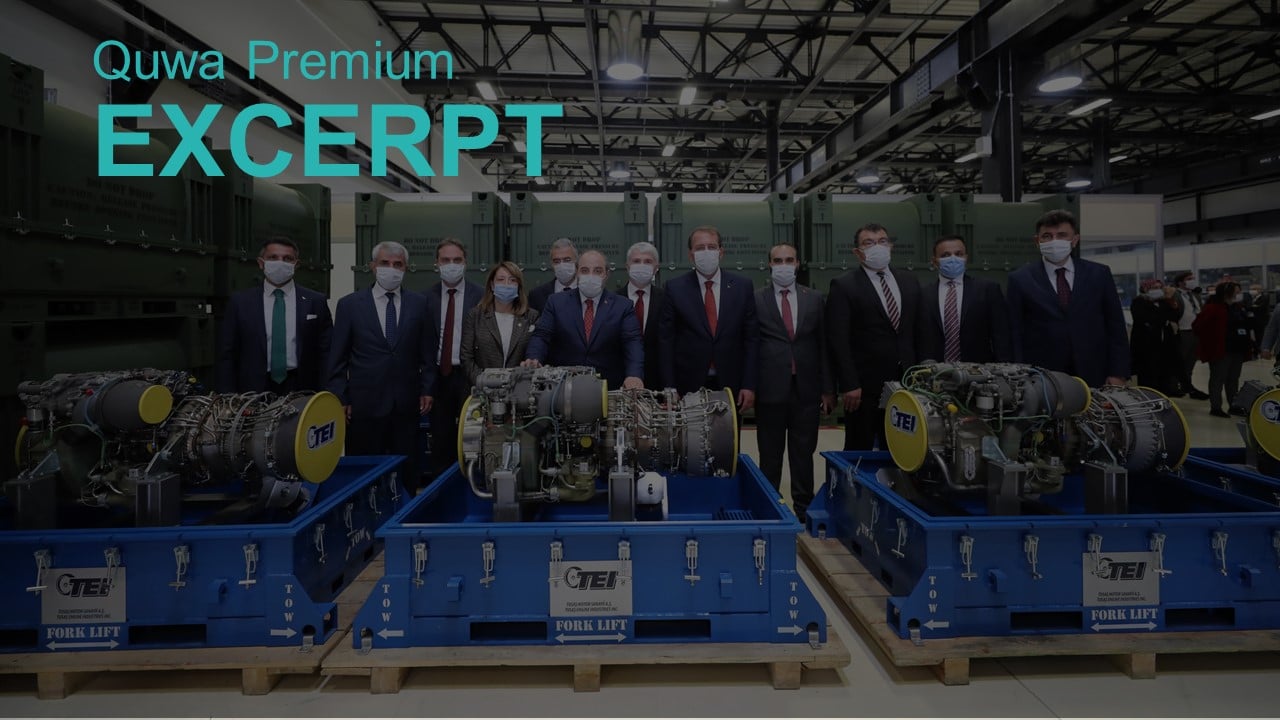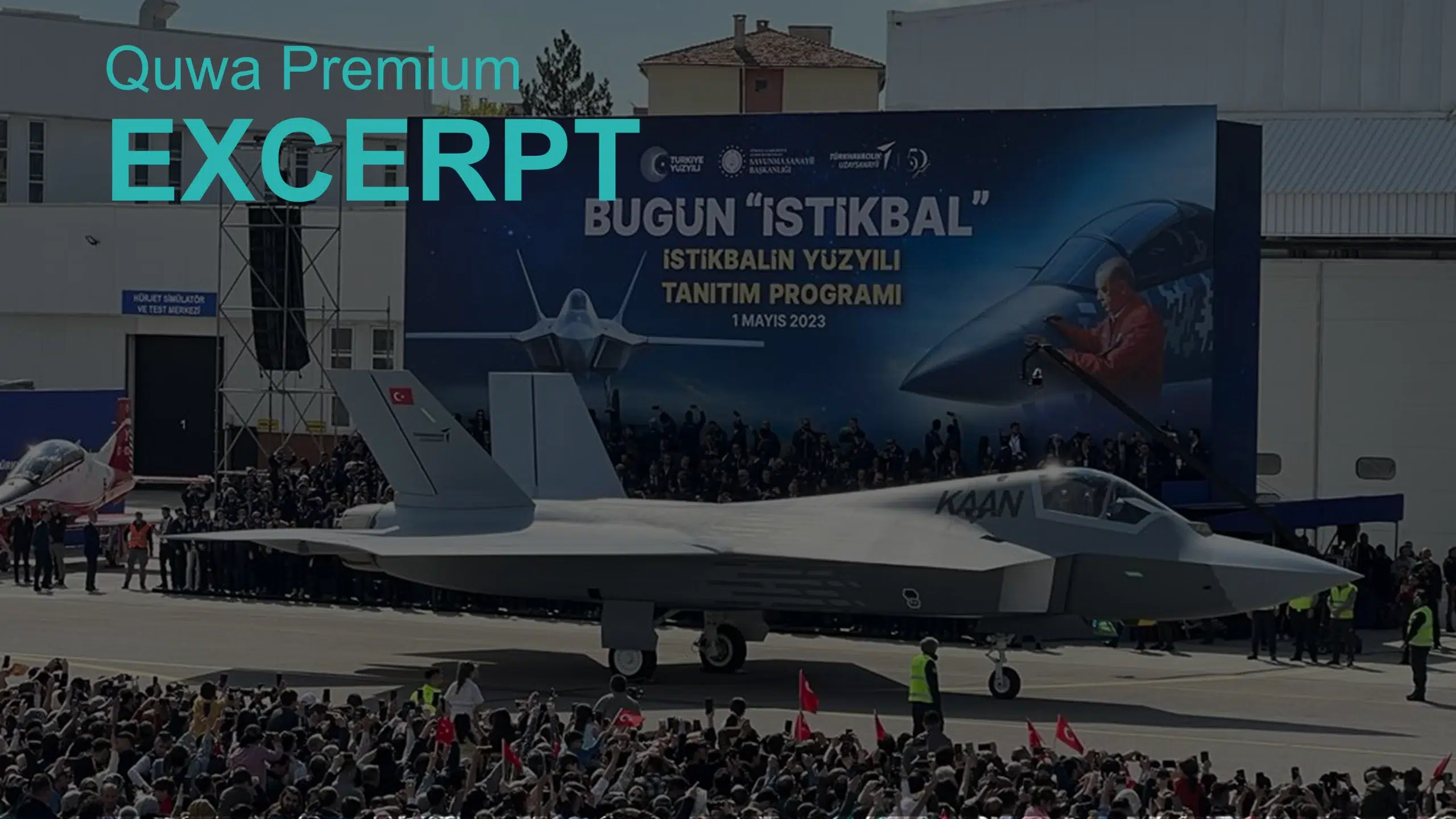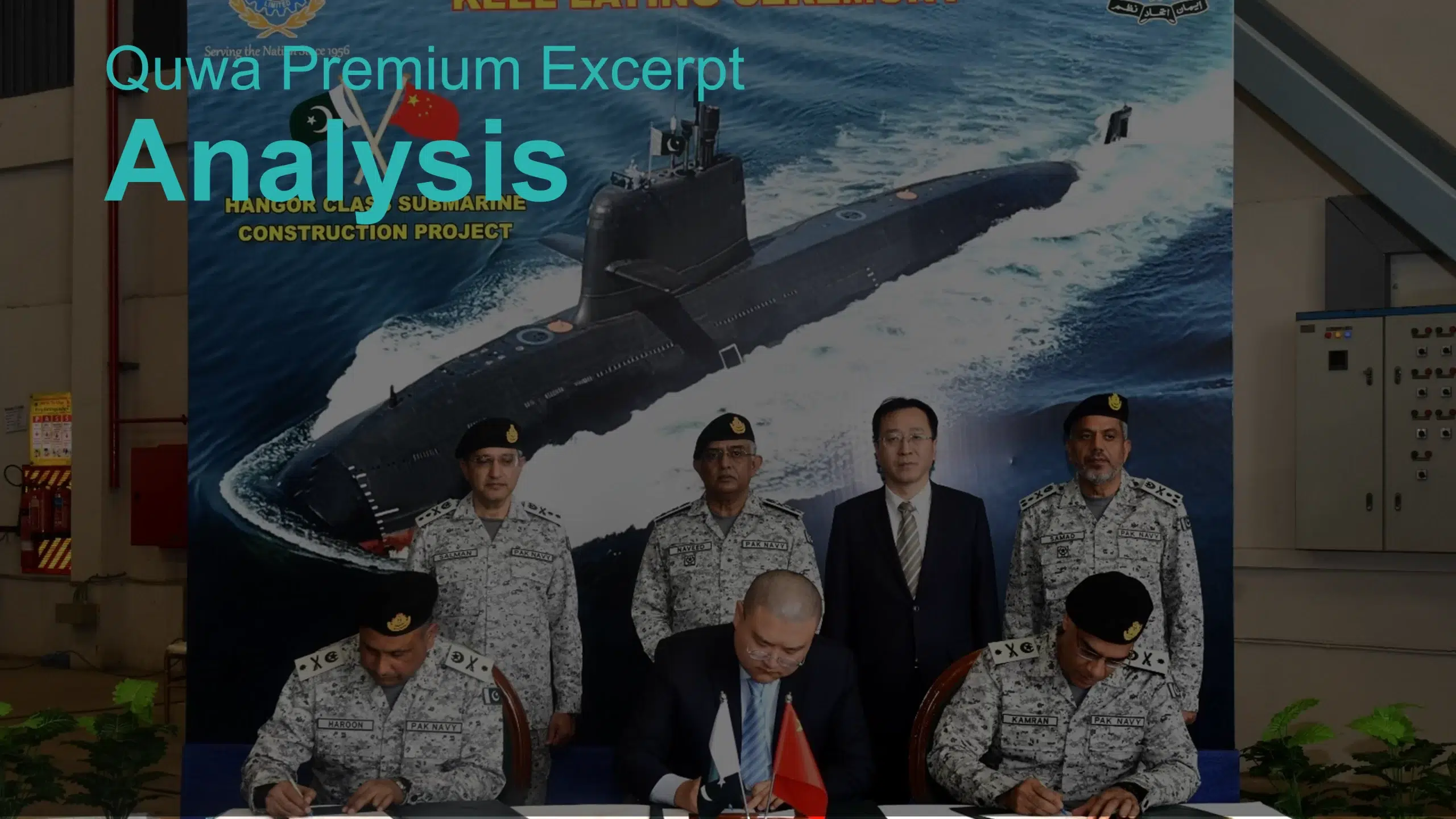2586Views

Turkey Makes Inroads in Aero Engine Development
On 19 June 2020, Turkey’s Tusaş Engine Industries (TEI) announced that it successfully tested its domestic TJ300 miniature turbojet engine at Turkish Aerospace Industries’ (TAI) facilities. TEI also tested the “core” of its TS1400 turboshaft engine, and is aiming to deliver the prototype to TAI in 2020.[1]
Turkey intends to power its anti-ship cruising missiles (ASCM) and land-attack cruise missiles (LACM) with homegrown engines. It currently imports miniature air-breathing engines from Microturbo to power its domestically developed cruise missiles. The TJ300 reportedly offers a thrust rating of 1.3 kN, which would not be enough for its larger ASCM/LACM designs, such as the Atmaca and SOM.[2] Rather, TEI will steer the TJ300 for a shorter-range application – TEI labels the TJ300 as the “Medium Range Anti-Ship Missile.”
Turkey also developing a larger miniature turbojet engine called the KTJ-3200. It will use the KTJ-3200 to power the Atmaca ASCM and SOM LACM/ASCM. Interestingly, the Turkish private sector – led by Kale – is driving the development of the KTJ-3200.[3] The KTJ-3200 will offer a thrust of 3.2 kN.[4]
The TS1400 is intended for the TAI T625 Gökbey utility and transport helicopter, which flew for the first time in September 2018, but with the CTS-800A turboshaft engine supplied by the joint-Honeywell and Rolls-Royce venture Light Helicopter Turbine Engine Company (LHTEC). The TS1400 will offer an output of 1,400 shp, potentially making it comparable to the engine Turkey is seeking to replace.[5]
Ankara has been working to end its reliance on overseas suppliers – especially Europe – for critical inputs, especially engines. In recent years, Ankara found that the governments of its critical suppliers leveraged Turkey’s reliance on those inputs to hamper its defence export sales and overseas military activities…[end of excerpt]
The Starting Point to Turkey’s Development Success
Between the time it started manufacturing air-breathing engines under license to now manufacturing the prototype of its first indigenous turboshaft engine, Turkey took many steps. These steps include funding for research and development (R&D), talent and capacity development – and retention – and many other specific policies. However, while these policies were successful because of the competency or quality of the execution, the actual cause is broader in its scope, and less tangible.
In observing Turkey’s defence industry, one can see that its central planners (i.e., the SSB) valued several key attributes, and implemented them across each institution, state-owned-enterprise (SOE) or program.
These attributes were:
- Staffing leadership positions of technology organizations (SOE) with industry experts, but with an emphasis on engineers and scientists with experience in managing the SOE’s work…[end of excerpt]
- Liberally supporting – if not relying on – the Turkish private sector to supply inputs for indigenous defence products, and even complete solutions. One flagship initiative is the Bayraktar series of unmanned aerial vehicles (UAV), which were designed and manufactured by Baykar Makina…[end of excerpt]
- Taking defence as both an issue of foreign policy/national security and economics, with the latter consideration driving domestic R&D and support to the Turkish private sector…[end of excerpt]
End of Excerpt (602/1,523 words)
You can read the complete article by logging in (click here) or subscribing to Quwa Premium (click here).
[1] “Turkey tests its 1st locally made medium-range missile engine.” Daily Sabah. 19 June 2020. URL: https://www.dailysabah.com/business/defense/turkey-tests-its-1st-locally-made-medium-range-missile-engine
[2] Busra Nur Yilmaz. “Turkey tests its first medium-range missile engine.” 19 June 2020. URL: https://www.aa.com.tr/en/science-technology/turkey-tests-its-first-medium-range-missile-engine/1883012
[3] “Another successful test from the domestic Turbojet engine.” Haber 7. 08 May 2020. URL: https://www.haber7.com/teknoloji/haber/2972630-yerli-turbojet-motorundan-basarili-bir-test-daha
[4] İbrahim Sünnetci. “Qualification Tests of KTJ-3200 Engine Still Ongoing.” Volume 18. Issue 98. URL: https://www.defenceturkey.com/en/content/qualification-tests-of-ktj-3200-engine-still-ongoing-3940
[5] “Original Power System TS1400 Turboshaft Engine Developed by TEI’s Seasoned Team of Experts for the T625 Helicopter.” Defence Turkey. Volume 13. Issue 92. URL: https://www.defenceturkey.com/en/content/original-power-system-ts1400-turboshaft-engine-developed-by-tei-s-seasoned-team-of-experts-for-the-t625-helicopter-3546
[6] Ibid.
[7] Ibid.
[8] Press Release. “Turkey Received Delivery Of Its First F-35 Aircraft.” Lockheed Martin. 30 June 2018. URL: https://www.f35.com/news/detail/turkey-received-delivery-of-its-first-f-35-aircraft


